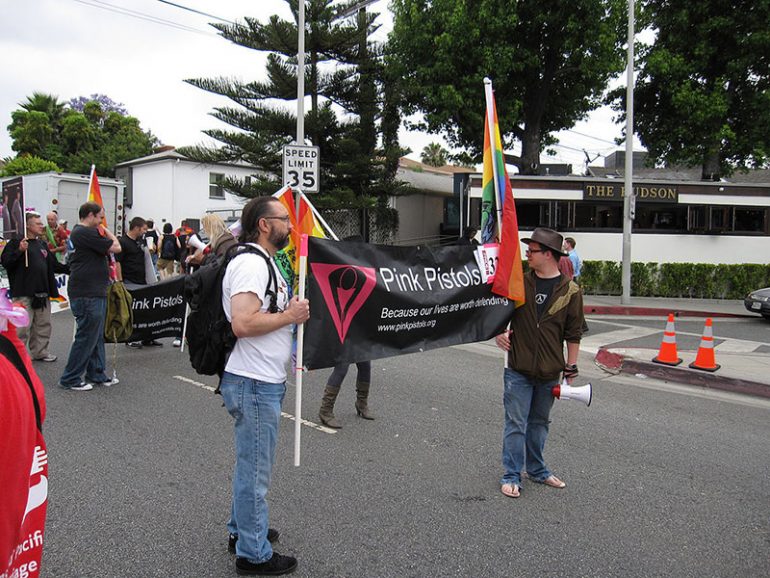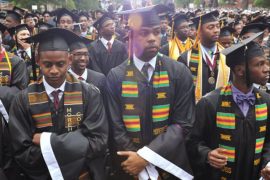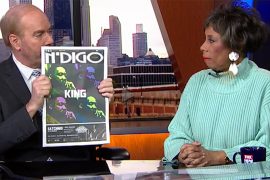By Paul King
I have long been concerned about the influence of outside groups on Black activism.
For instance, in the 1970s, the United Builders Association, of which I was executive director, the Coalition for United Community Action, and Congressman Parren Mitchell’s Minority Business Enterprise Brain Trust began using affirmative action policy to generate laws and opportunities for Black businesses in federal procurement.
The feminist movement was taking shape at the time and entered our talks proposing the language of “Blacks OR women” in dealing with minority set-asides. Recognizing the danger in that, we settled for “Blacks AND women.”
But that togetherness was short lived and white women went on to achieve business contracts, public sector employment and public influence that dwarfs Black progress in these areas to this day.
Similarly, Hispanic contractors joined us in the late 1980s under the banner of “minority business.” However, Hispanic firms proved to be more culturally acceptable to policy makers, developers, general contractors and city and state funding sources (think UNO, the United Neighborhood Organization). Once again a coalition of Black interests and other interest groups left us behind. Just look at the city of Chicago’s spending between Blacks and others.
This all came to mind after I recently reviewed an op-ed piece in the New York Times titled ³The LGBT Case For Guns²
(www.nytimes.com).
It is about a gay group called the Pink Pistols that espouses arming themselves for protection with the claim that they have been more victimized than any “minority” group in America.
Nicki Stallard, a spokesman for Pink Pistols, an LGBT gun group, writes that following the Orlando shootings, LGBT people should arm themselves when out for self-protection. Then Stallard makes the statement, “Violence toward LGBT people is real. We are victimized at far greater rates than other minority groups.” WOW!!!!
Where has this person been? Prior to June 17, 2015 with the carnage at Emanuel AME Church in Charleston, over 45 Black churches were bombed or burned. These were not social clubs, but houses of worship.
Challenges to dual loyalties will come, as they have to all coalitions pursuing Black survival and advances.
Bryan Stevenson’s Equal Justice Initiative cites that from 1877 to 1950, 3,959 Black people were lynched to death. From 1932 to 1972, the U.S. Public Health Service conducted the Tuskegee Study of Untreated Syphilis in the Negro Male at Tuskegee University in Alabama.
It was an experiment on 399 Black men in the late stages of syphilis. These men were infected and never treated even after penicillin was in use. How can any group compare itself to this level of injury and intentional harm?
LBGT Americans represent a reported 3.8 percent of the population, but are receiving a plethora of media coverage.
According to writer Jelani Cobb in a March 14, 2016 New Yorker article, Black Lives Matter is led by Alicia Garcia, a lesbian who is an advocate for queer and transgender rights and is married to a trans male activist.
Cobb quotes Garcia as saying, “A common social dig (regarding BLM) is that it is a gay movement masquerading as a Black one.” I attended a Chicago Humanities Forum where Garcia spoke in brilliant, glowing, articulate terms sufficient to bring one to tears.
Darryl Holiday in the March 2016 issue of Chicago Magazine covers BP100, an outstanding activist organization that limits its membership to those between the ages of 18 and 35. BP100’s most prominent face and leader is Charlene Carruthers, who identifies as a queer feminist.
BP100 has done the necessary work of staging demonstrations over the death of Laquan MacDonald, Donald Trump’s failed UIC rally, and police misconduct. Through Cathy Cohen, the group landed a $350,000 grant from George Soros’ Progressive Open Society Foundation.
This essay is not about gender preference or sexual identification. It has to do with when the leaders of Black Lives Matter or BP100 are faced with choices for private funding, media attention and/or public policy, which choice will they make? When making an ASK in the protest context, you can get ONE thing, not two!
So here’s a potential conflict with the Pink Pistols wanting to arm themselves, where are the leaders of Black organizations speaking out and challenging this?
In 1970 when we closed down construction projects, the city offered to ³help us out” by putting us on the Model City’s funding rolls. I was broke, but turned it down because I couldn’t take the dollars and still fight the city.
BP100 should take its youthful energy to challenge the White House, while sending letters regarding transgender rights in public schools, to send emergency funds to Chicago to assist public school Black students while Illinois state budget negotiations go on.
Black Lives Matter should take its social media savvy after challenging Pink Pistols and team up with Dr. Gary Slutkin of Cure Violence to intervene on Chicago’s Black-on-Black carnage.
Challenges to dual loyalties will come, as they have to all coalitions pursuing Black survival and advances. The choices on media coverage, public policy and foundation funding will be tough. But you can’t have it both ways.








informative..a lesson to learn.